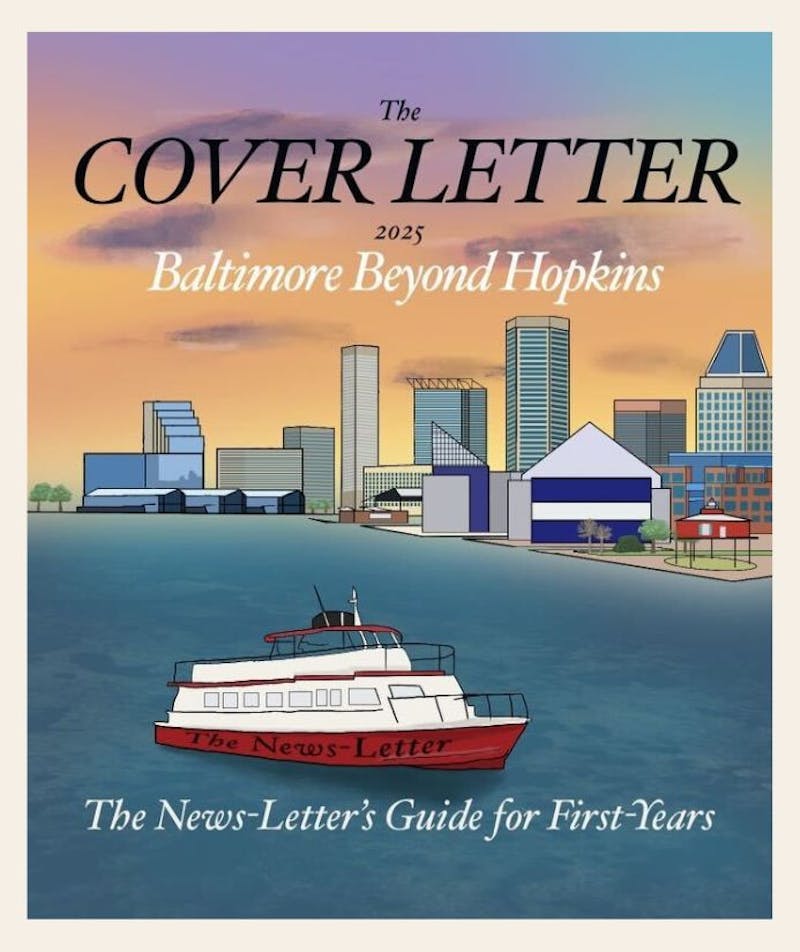For Hopkins students who dream of attending the University's prestigious medical school or School of Public Health, visiting the William H. Welch Medical Library or the Abraham M. Lilienfeld Public Health library could be a sort of pilgrimage.
If you're the type to get excited about medical journals like Advances in enzymology and related areas of molecular biology or British Journal of Urology, then you would probably look forward to spending time in either of the libraries that support the health schools.
Though both the Welch and Lilienfeld libraries chiefly support research and patient care at the Johns Hopkins Medical Institutions (School of Medicine, Bloomberg School of Public Health, School of Nursing, Johns Hopkins Hospital, Kennedy-Krieger Institute), any Hopkins affiliate with ID can enter and browse through the libraries' holdings. However, in order to check materials out of Welch or Lilienfeld, students must fill out a library card application online. The application can be found at http://www.welch.jhu.edu/index.cfm.
Relatively few Arts & Sciences students make the trek to study or research in the two libraries despite their availability.
"The main constituents [of the Lilienfeld library] are from the School of Public Health, but we also have the various schools represented, including the school of Arts and Sciences," said Lilienfeld librarian Donna Hosson.
The two libraries are conveniently located near the schools they serve. The elegant limestone of the Welch library stands out at 1900 E. Monument St. The Lilienfeld library is slightly more difficult to find: the collection itself is housed on the ninth floor of the Hampton House at 624 N. Broadway. Students coming from Homewood can easily access the libraries by taking the JHMI shuttle to its final stop at the School of Public Health on Monument Street.
Welch and the Lilienfeld cater exclusively in both their collections and in their services to those in the medical professions. Both carry textbooks, academic journals and audio-visual material relating to medicine and public health.
Though the two libraries may seem to share similar purposes, Hosson explained the need for specialization among the two collections.
"The purpose of Lilienfeld is that it's a specialized library; it is a library for Public Health. The volumes and materials [housed] at the medical library are not necessarily in that vein of public health, which encompasses anthropology, sociology and things like that. It's a wider variety of subject matter."
Despite their different collections, the librarians at both schools perform the same function. For example, specifically trained librarians (many of whom hold advanced degrees in both library sciences and health sciences) can help students research and organize papers.
"The role of the librarians is to run the library as well as to assist faculty, staff and students with their research," said Hosson. "We do go on one on-one-with Public Health students, and assist them in using bibliographic software such as EndNote to cite references in an article or paper for publication," Hosson continued.
The Welch library offers free lectures about once a month for students to learn about research technologies and methods.
Claire Twose, Welch librarian, who teaches a course on Evidence-Based Health Care, noted that few Arts and Sciences students attended the small lectures.
"Interestingly enough, [the audience] has tended to be fellows and post-docs, and individuals who do some clinical work but might be working on a research study; might be a nurse, might be involved in research in some area. I have had Public Health students and some med students, too."
During the summer, both free and for-fee classes concerning technology and research are hosted at Welch. Free classes, most of which concern library services and research methods, and are taught by librarians, are listed at http://www.welch.jhu.edu/classes/biomed.cfm. The for-fee classes, which generally span one or two days offer instruction in Microsoft XP, Adobe, DreamWeaver, HTML formatting and even building SQL queries.
The Welch Web site offers many useful tools. Students looking for a piece of media not included in Welch's 370,000 bound volumes, 2300 audiovisual programs, and current subscriptions to nearly 2,400 journals can order materials through WelDoc, an interlibrary loan and document delivery service. Students writing research papers often use PubMed, an online service of the National Library of Medicine, which contains 15 million citations for biomedical articles back through the 1950s.
With the Welch and the Lilienfeld Library accessible to undergraduate students, they have much wider options to search for resources to do research, and should be taken advantage of more often.


